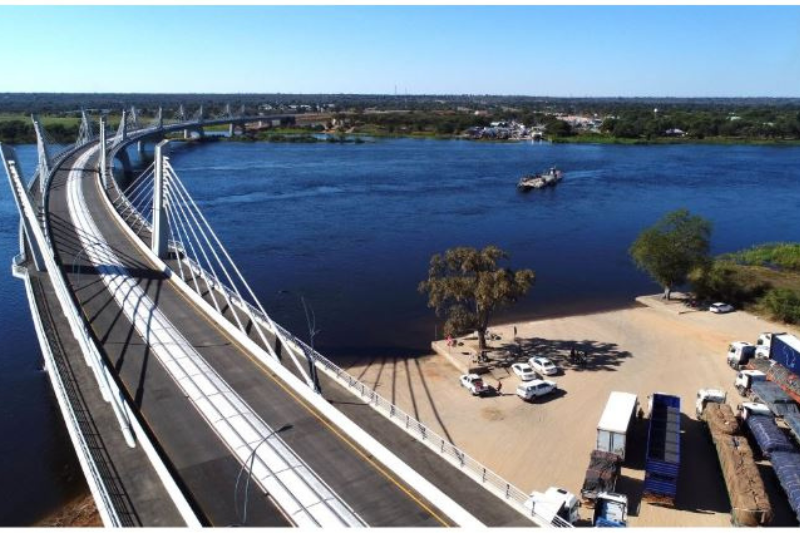Ammonia, which is made up of nitrogen and hydrogen, is commonly used as a fertilizer. Production of ammonia at an industrial scale allowed agriculture to boom, and according to a study from the University of Manitoba, without it, we wouldn’t be able to produce roughly half of the world’s food today. Across the African continent, innovative transport systems, telecoms operations and smart cities are being developed to boost economies and increase trade opportunities. The Kazungula Bridge — The 923-meter long bridge over the Zambezi River connects Botswana and Zambia.
The $58 billion project, started in 2015, is designed to be a hub for government and the finance industry. Egypt hopes to entice some of the 20 million residents of its current capital, Cairo, to relocate to the new city, where there is space for 6.5 million people. The city will feature numerous skyscrapers, including Africa’s soon-to-be tallest building, the Iconic Tower . In 2020 a $4 billion, 100-kilometer monorail project, connecting Cairo and the new city, was announced.
A $5 billion dam across the Nile — The ambitious Grand Ethiopian Renaissance Dam is one of Africa’s biggest infrastructure projects. Built on the Blue Nile River near Ethiopia’s border with Sudan, the $5 billion dam will generate 6,000 megawatts of electricity annually. The project aims to turn Ethiopia into Africa’s biggest hydroelectric exporter. The Blue Nile is one of two sources for the River Nile, providing 85% of the water that flows north through Sudan and Egypt, to the Mediterranean.
Colonial-era agreements mean Egypt and Sudan, which rely on the river for their water supply, have maintained control over the river in the past — but Ethiopia’s dam threatens this. Negotiations between Ethiopia, Sudan and Egypt are ongoing, but an agreement is yet to be reached. Ethiopia began generating electricity from the dam on February 20, 2022. The Suez Canal expansion — Egypt’s Suez Canal underwent an $8 billion expansion in 2015 to increase trading potential, and it has paid off, with a 4.7% rise in revenue.
The Chinese Development Bank has loaned $629 million to the project and China Harbour Engineering Company is providing $221 million in equity funding for the port, which is expected to generate revenue of $361 billion and create up to 170,000 new jobs. Supercharging western Africa’s internet — Google Equiano is a subsea internet cable running from Portugal to South Africa, with 20 times the bandwidth of the previous cable serving the west coast of Africa. In May this year, Siemens announced it had finalized a 8.1 billion euro contract with its partners and the Egyptian government for a 2,000-kilometer rail system linking 60 cities across the country. A multi-billion dollar expansion of Lagos — Work began on the multi-billion-dollar Eko Atlantic project, which is set to transform Lagos, Nigeria’s largest city, in 2009.
Namibia reclaims 40 hectares for new port terminal — As Namibia’s largest commercial port, Walvis Bay processes five million tons of cargo every year. A $300 million, five-year project has seen the port more than double its capacity for container units and reduce waiting times for ships. New refinery hopes to power up Nigeria — While Nigeria is one of Africa’s most oil-rich countries, its refineries are only operating at a small fraction of their capacity. Covering 2,635 hectares, the new Dangote Petroleum Refinery will be the largest in Africa, with capacity to process 650,000 barrels a day.
Dangote hopes to create a market for Nigerian crude oil worth $11 billion annually. The $3.8 billion project was built by Chinese construction company China Road and Bridge Corporation , and 90% funded by China Exim Bank. The $1.5 billion project was also built by CRBC and financed by Exim Bank. Extensions to the current line are still under consideration for the coming years, with proposals for lines connecting with Ethiopia, Uganda and South Sudan, as well as further lines within Kenya.
Prominent among them is the use of ammonia as fuel, which could help decarbonize the shipping sector. « That will become the fuel of the future, particularly in the maritime industry,» says Colin Loubser, managing director of Hive Energy Africa, which is building the plant.
The process to make green ammonia is quite simple, Loubser says, requiring just water, air and energy. «The process of making it green is that you’re using renewable energy for this. It’s a completely green process,» says Loubser. Projected to start operations in 2026, the plant will cost $4.6 billion.
At least 20,000 jobs will be created in the region over the lifespan of the project, according to Loubser.
Google Equiano: Internet giant bets big on Africa with latest megaproject
It will be a welcome development for the area. «We were hit very hard by Covid,» says Asanda Xawuka of the Coega Development Corporation, the entity in charge of bringing employment to the region. «A number of jobs were lost in South Africa. » .

